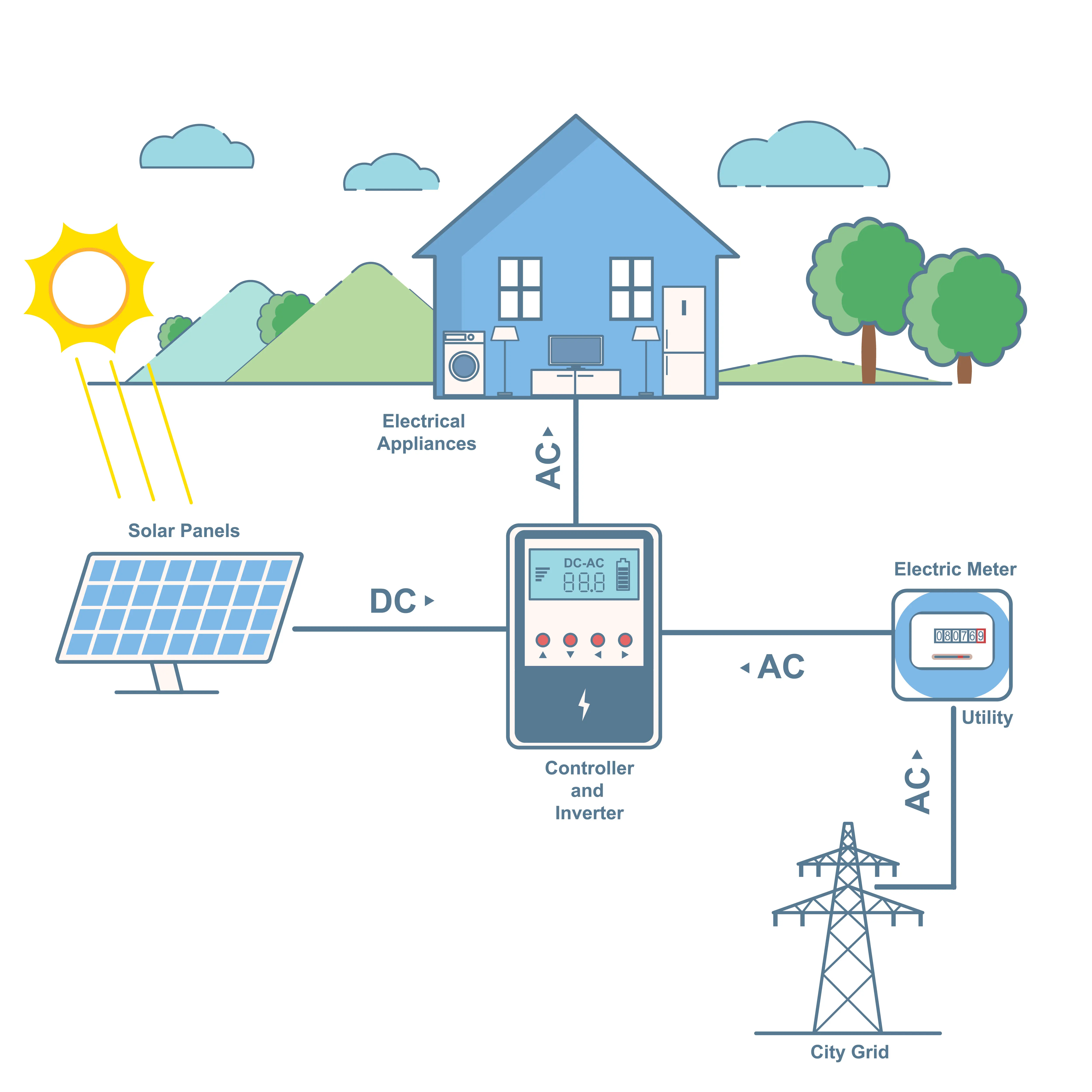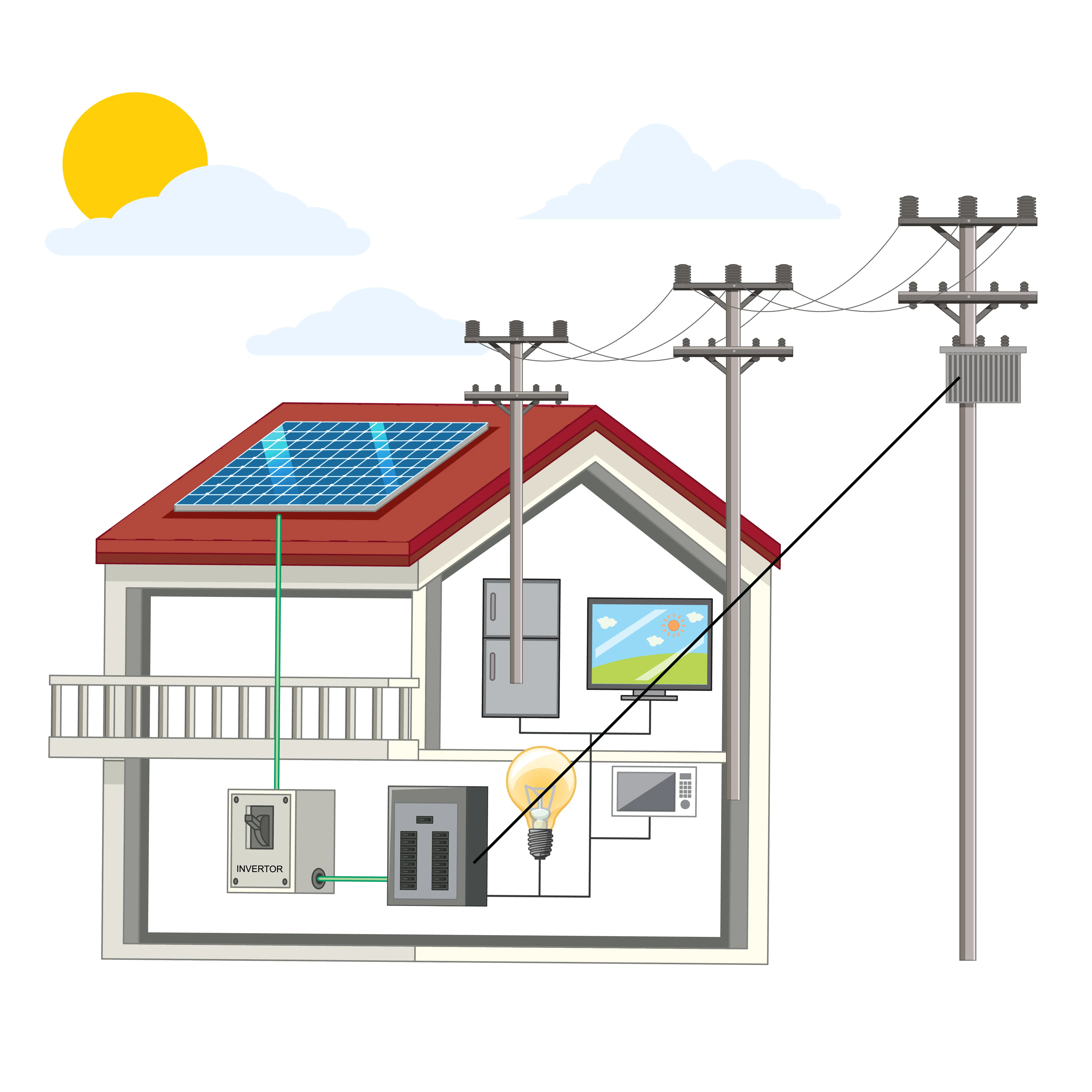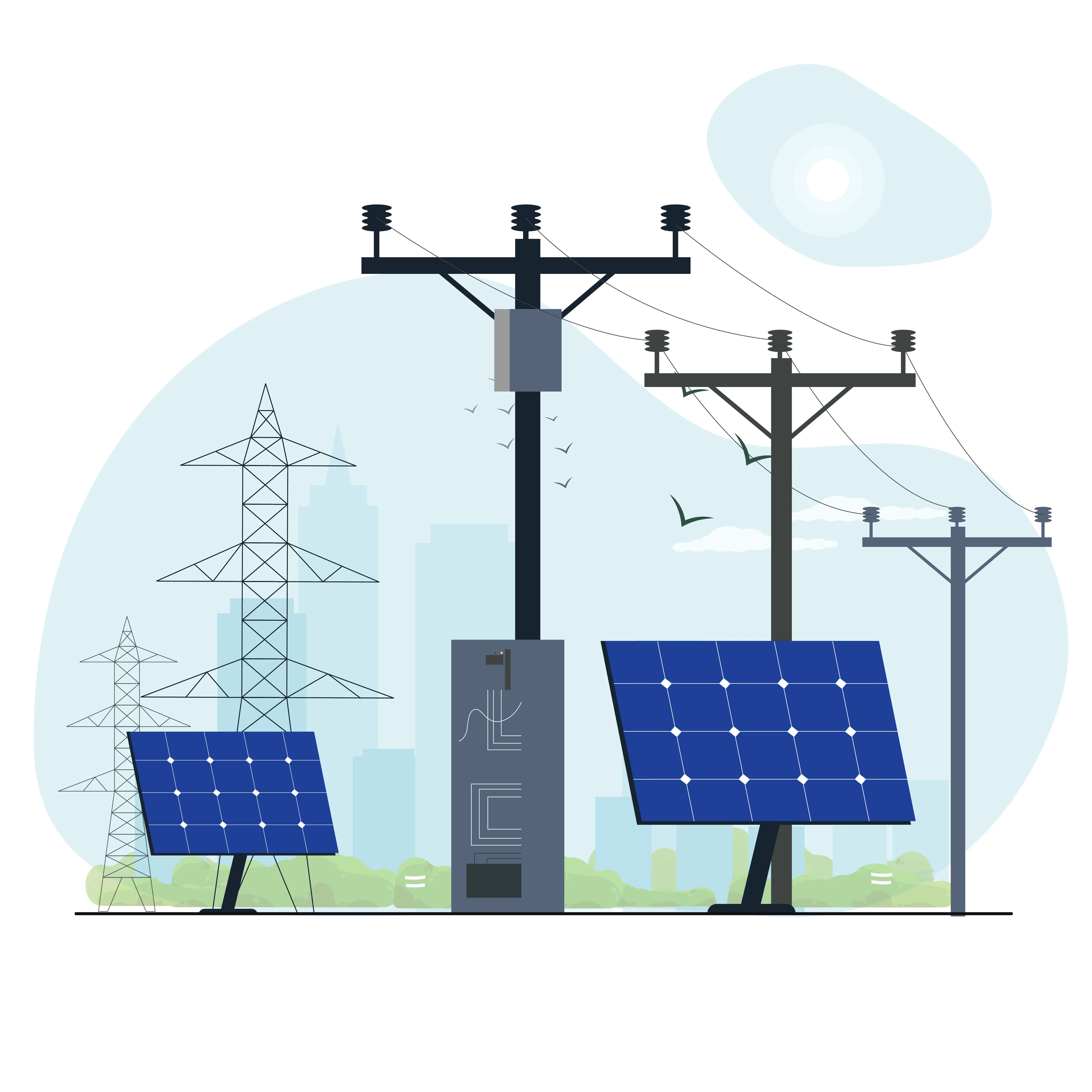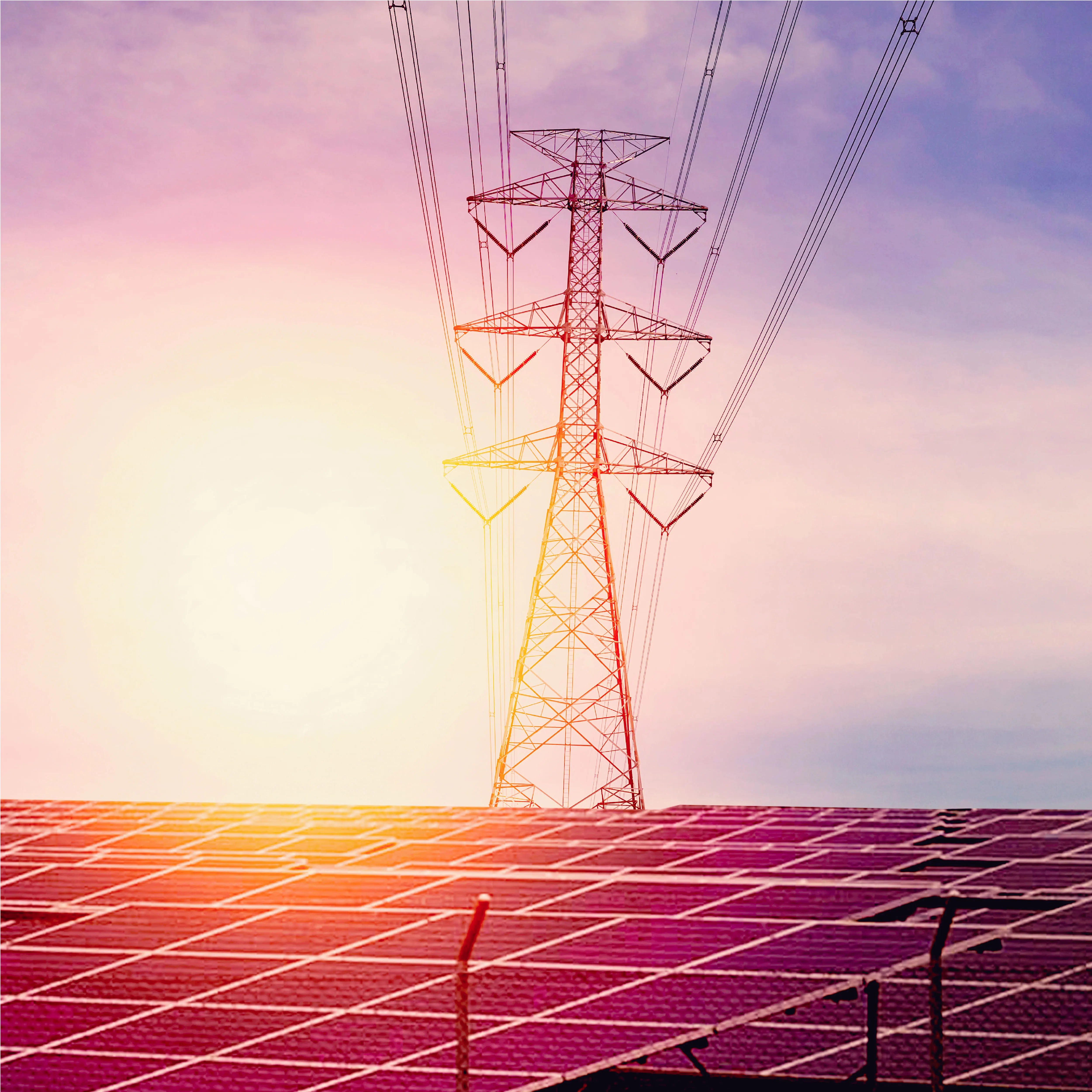Introduction to Grid Synchronization in Solar Systems
As the world increasingly shifts towards renewable energy , grid synchronization has emerged as a critical element in the integration of solar energy systems into existing power grids. For homeowners and industries alike, understanding this process ensures optimal performance and reliability. Whether you're exploring solar panels for home use or advanced photovoltaic panels, grid synchronization is key to maximizing solar energy’s potential.
What is Grid Synchronization?
Grid synchronization is the process of aligning a solar power system with the main electricity grid. This involves matching the voltage, frequency, and phase of the solar-generated electricity with the grid’s parameters. Without proper synchronization, the system cannot transfer power efficiently or safely.
For solar energy systems using photovoltaic technologies, effective grid synchronization ensures stable power delivery and enhances overall system reliability.


Key Components of Grid Synchronization in Solar Systems
Grid: The electrical grid is an intricate system that links power generation plants to consumers across vast regions. Operating on AC electricity at standard voltage and frequency levels, it serves as the essential framework for delivering electricity to homes, businesses, and industries.
Inverters: The inverter plays a crucial role in converting DC electricity from solar panels into AC electricity compatible with the grid. Advanced inverters automatically adjust output to match grid parameters, ensuring seamless integration.
Solar Module Structure: A robust solar module structure is essential for reliable operation. Solar module manufacturers design these structures to withstand environmental factors while ensuring optimal energy generation.
Monitoring Systems: Modern monitoring systems track energy production and grid alignment, providing insights into system performance. These systems also alert users to any synchronization issues.
Control Systems: Control systems manage the synchronization process, adjusting parameters like voltage and frequency to ensure a smooth flow of energy.
Why is Grid Synchronization Important?
Grid synchronization is crucial for ensuring safety, efficiency, and reliability. It enables the solar system to operate securely and comply with regulations, facilitating seamless power exchange between the system and the grid. This integration enhances the grid's performance by incorporating renewable energy into the power supply.
Ensures Safety: Proper synchronization prevents power surges and fluctuations, safeguarding both the solar system and the grid infrastructure.
Maximizes Efficiency: By aligning with the grid’s specifications, solar systems can operate at peak efficiency, reducing energy waste.
Facilitates Energy Export: Grid synchronization enables homeowners and businesses to export excess energy generated by their solar panels for home use, contributing to a sustainable energy ecosystem.
Supports Grid Stability: A synchronized system helps maintain grid stability by ensuring a steady supply of electricity during varying demand.
Steps for Grid Synchronization in Solar Systems
Solar inverters are designed to align seamlessly with the electric grid, ensuring efficient integration of solar systems. This enables the smooth transfer of renewable energy into the grid.
Synchroscope Grid Synchronization Method: This technique utilizes a device called a synchroscope to monitor whether a solar system aligns with the grid. Once alignment is confirmed, the inverter adjusts itself to synchronize seamlessly with the grid.
Two Bright, One Dark Grid Synchronization Method: In this method, the solar inverter modifies its voltage until two lamps appear bright and one remains dark. This configuration indicates that the inverter is synchronized with the grid.
Three Dark Lamps Grid Synchronization Method: This method involves three lamps, where the inverter adjusts its voltage until all three lamps go dark simultaneously. This alignment confirms the inverter's synchronization with the grid.
These synchronization methods ensure solar systems integrate effectively with the grid, enabling the smooth transfer of renewable energy.


Applications of Grid-Synchronized Solar Systems
Residential Use: Homeowners can reduce electricity bills and achieve energy independence by installing grid-synchronized solar panels for home use.
Commercial Use: Businesses benefit from lower operational costs and enhanced sustainability by integrating solar energy into their operations.
Utility-Scale Projects: Large-scale solar farms rely on grid synchronization to contribute renewable energy to the national grid effectively.
Energy Management: In grid-synchronized solar systems, inverters efficiently manage energy loads by prioritizing critical loads and optimizing the use of solar power.
Grid Support: Advanced inverters enhance grid stability and resilience by regulating voltage and controlling frequency, contributing to a more reliable energy network.
The Role of Solar Panel Manufacturers in Grid Synchronization
Solar panel manufacturers play a pivotal role in ensuring that their products are compatible with grid synchronization requirements. By designing advanced photovoltaic panels, they facilitate seamless integration into the grid. Additionally, these manufacturers collaborate with system integrators to optimize system designs for specific applications.
Future Trends in Grid Synchronization Technology
With advancements in technology, grid synchronization is becoming more efficient and user-friendly. Innovations such as smart inverters, AI-driven monitoring systems, and enhanced solar module structures are set to revolutionize the way solar systems interact with the grid.
Photovoltaic panels manufacturers are also focusing on producing smarter and more adaptable modules to meet the growing demand for renewable energy.

Wrapping Up
Grid synchronization is an essential aspect of harnessing solar energy effectively. By understanding its significance and choosing the right components, including high-quality solar panels and robust solar module structures, users can ensure optimal performance and contribute to a greener future.
As leading solar panel manufacturers continue to innovate, the integration of solar systems with the grid will become even more efficient, making solar energy accessible to all. Ready to power your home or business with synchronized solar energy? Visit PIXON to explore cutting-edge solutions tailored to your needs.
Explore our range of advanced solar panels and take the first step towards a sustainable future. Contact us today!